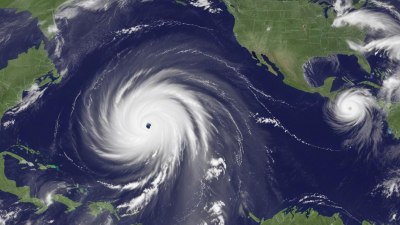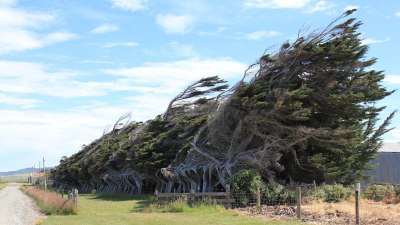Why Some Clouds Form Straight Lines Across the Sky
Explore the science behind linear cloud formations and their meteorological significance.

When observing the sky, you may have noticed certain cloud formations that appear in straight lines. These linear cloud formations can be captivating, often resembling brush strokes across a canvas of blue. But why do some clouds form these intriguing shapes? The answer lies in a variety of meteorological phenomena that influence cloud formation and behavior.
Understanding Cloud Formation
Clouds are formed when water vapor in the atmosphere condenses into tiny water droplets or ice crystals. This process can occur when moist air rises and cools, allowing the vapor to condense. The general principles of cloud formation revolve around temperature, pressure, and humidity. Atmospheric conditions play a crucial role in determining the appearance of clouds, including their shape and distribution.
The Role of Wind Patterns
One of the primary reasons clouds form in straight lines is the impact of wind patterns. Atmospheric winds can transport clouds over long distances, and in some cases, these winds can create linear formations. For example, when clouds are pushed along the same wind direction, they can line up in a straight row. This is often seen with stratocumulus or cirrus clouds, which are particularly susceptible to such straight-line formations.
Fronts and Cloud Lines
Weather fronts also play a significant role in the organization of cloud structures. A front is a boundary between two air masses with different temperatures and humidity levels. When a warm, moist air mass meets a cold, dense air mass, it can lead to the rapid development of clouds along the front. These clouds can often take on a linear shape, creating a distinct line in the sky indicative of the front's movement.
Cloud Streets
Another fascinating phenomenon contributing to linear cloud formations is known as “cloud streets.” Cloud streets occur when a layer of air is heated from below by the surface, creating thermals. As these thermals rise, they can create aligned columns of clouds that form in straight lines parallel to the wind direction. This formation often occurs in fair weather conditions where the underlying surface is heated by the sun, resulting in rows of cumulus clouds, forming a picturesque skyline.
Low-Pressure Systems
Low-pressure systems can also generate straight-line cloud formations. In these systems, the inward spiral of wind around the area of low pressure can lead to organized cloud bands. These bands can stretch for hundreds of miles, producing visually striking linear patterns in the sky. Often, as a low-pressure system moves, it stretches the associated clouds, resulting in long lines of cloud cover that may appear ominous but are simply a part of a dynamic weather system.
Jet Streams
Jet streams, which are fast-flowing air currents found in the upper levels of the atmosphere, also contribute to straight cloud formations. The presence of a jet stream can enhance the organization of clouds, aligning them in parallel bands. This phenomenon is often seen in weather patterns associated with mid-latitude cyclones, where the upper-level winds influence the cloud structure in the lower atmosphere, reinforcing the straight-line cloud patterns.
Temperature Inversions
Temperature inversions can create layers within the atmosphere, influencing how clouds develop. During an inversion, warmer air traps cooler air below it, which can lead to the formation of stratiform clouds. If wind conditions are right, these clouds can appear in straight lines as they form at the boundary between the warmer air aloft and the cooler air beneath. This scenario can often lead to extensive cloud cover, sometimes obscuring the sun completely.
Cloud Types and Their Shapes
The type of clouds involved also plays a critical role in their formation characteristics. Stratus, cirrus, and cumulus clouds exhibit distinct behaviors under various atmospheric conditions. For instance, stratus clouds are typically layered and can extend over long distances, leading them to form in linear arrangements, especially under stable conditions. Meanwhile, cirrus clouds are high-altitude clouds that can form in thin wisps, and their shape can sometimes appear more scattered yet can still align linearly when influenced by upper-level winds.
Atmospheric Stability
The stability of the atmosphere affects how clouds develop. In a stable atmosphere, less vertical movement occurs, leading to layered cloud formations. In contrast, an unstable atmosphere allows for more vertical movement, resulting in a combination of cloud shapes. Straight-line formations often indicate regions where the atmosphere may transition from stable to unstable, creating a unique visual representation of changing weather patterns.
In conclusion, the straight-line formations of clouds across the sky unfold due to an interplay of various atmospheric conditions, including wind patterns, weather fronts, thermals, low-pressure systems, jet streams, temperature inversions, and cloud types. These phenomena provide incredible insights into weather dynamics while beautifying our skies. Understanding the reasons behind these formations enhances our appreciation for the complexity and beauty of the natural world. So, the next time you gaze up and see clouds stretching out in perfect lines, remember the intricate meteorological dance occurring above you—a dance that reflects changes in our atmosphere and the exciting science of weather.











